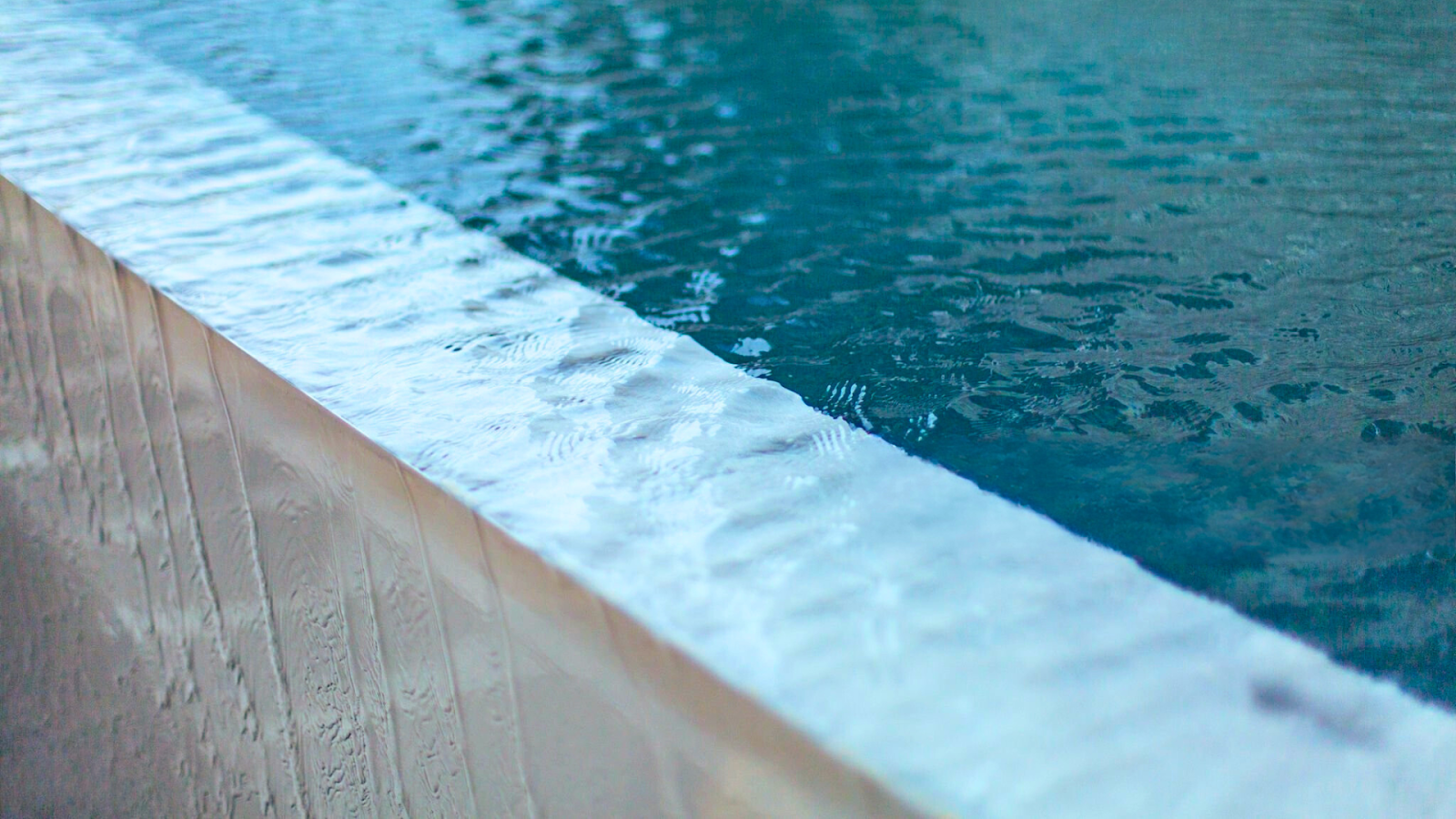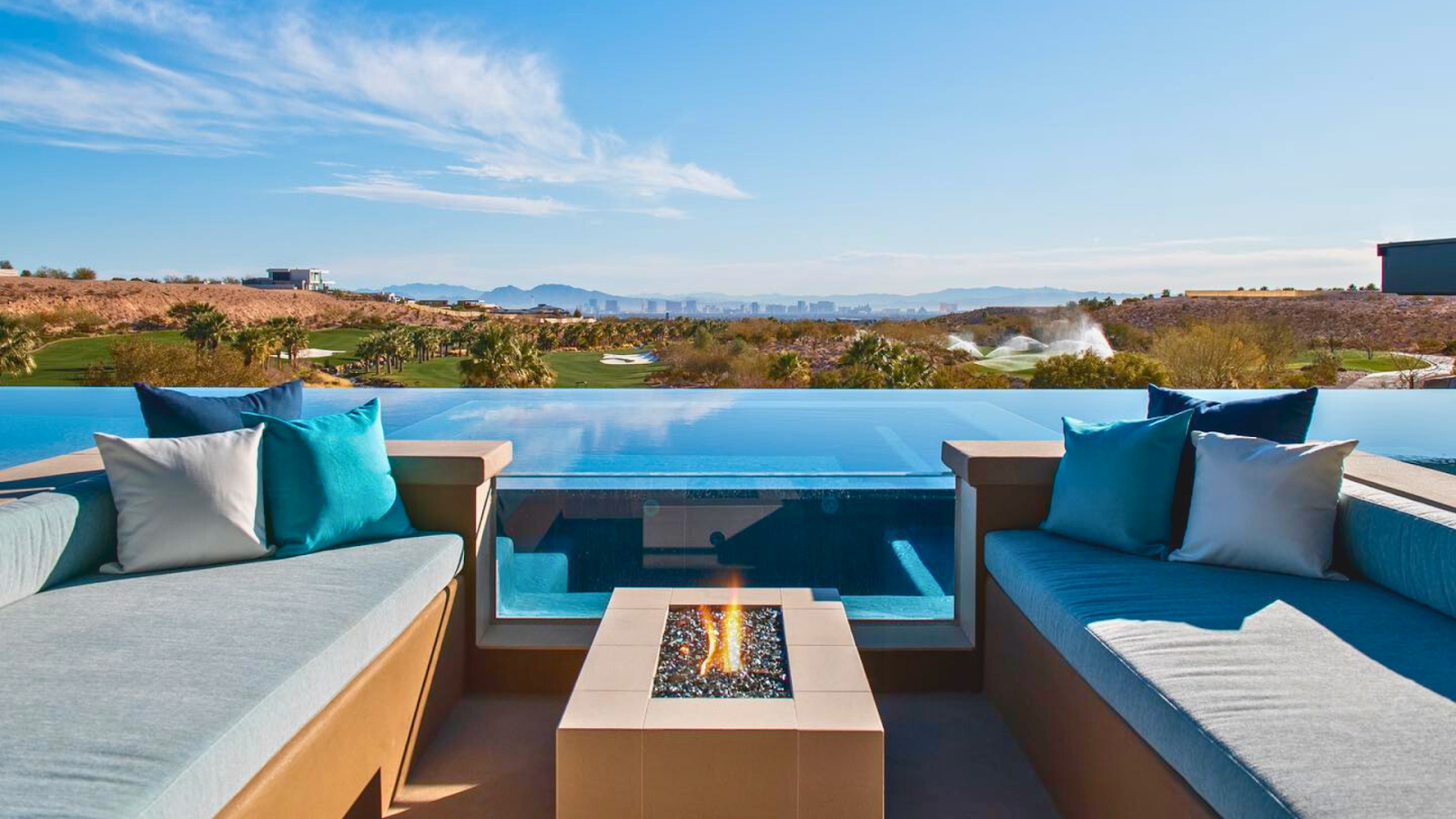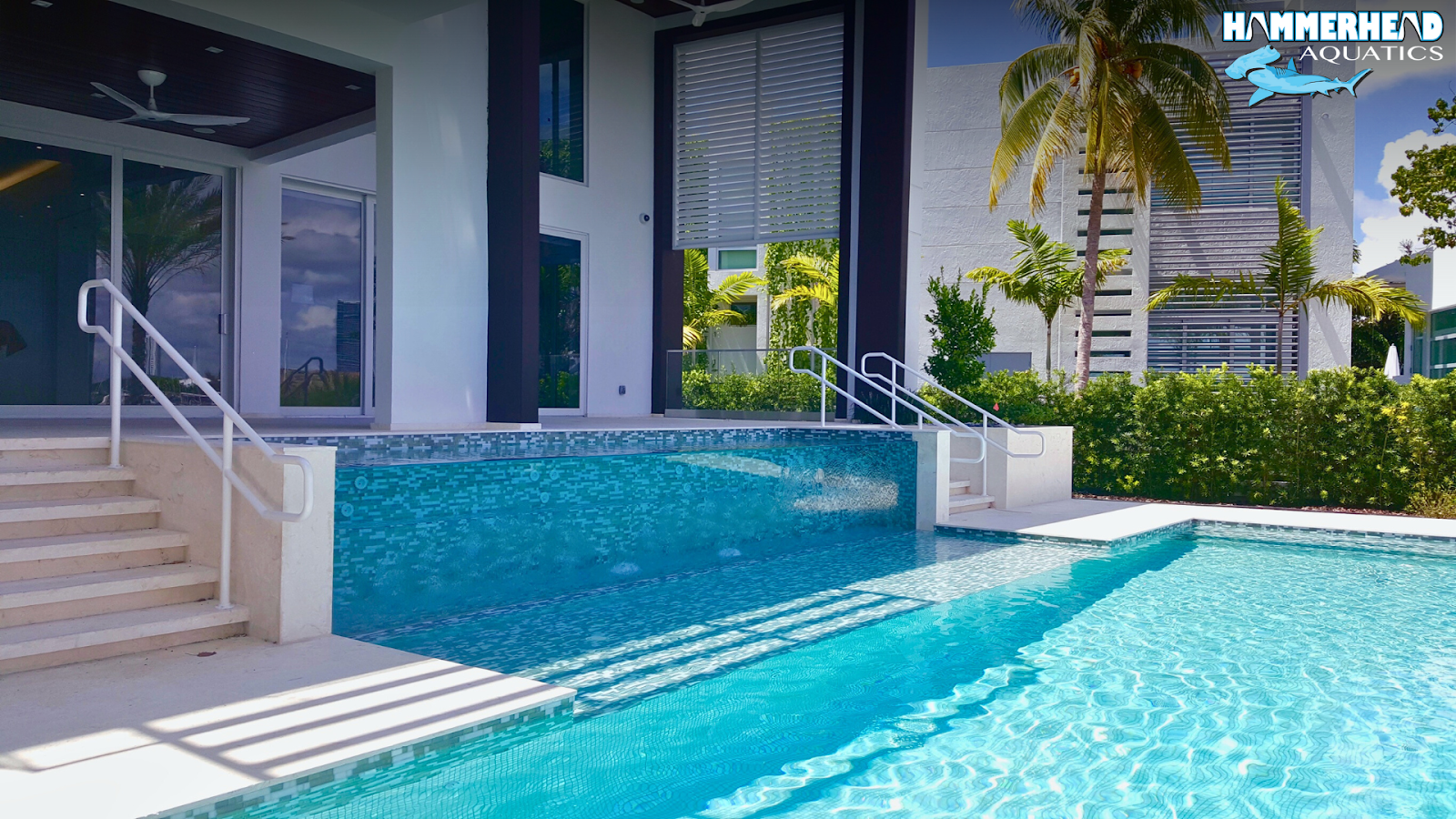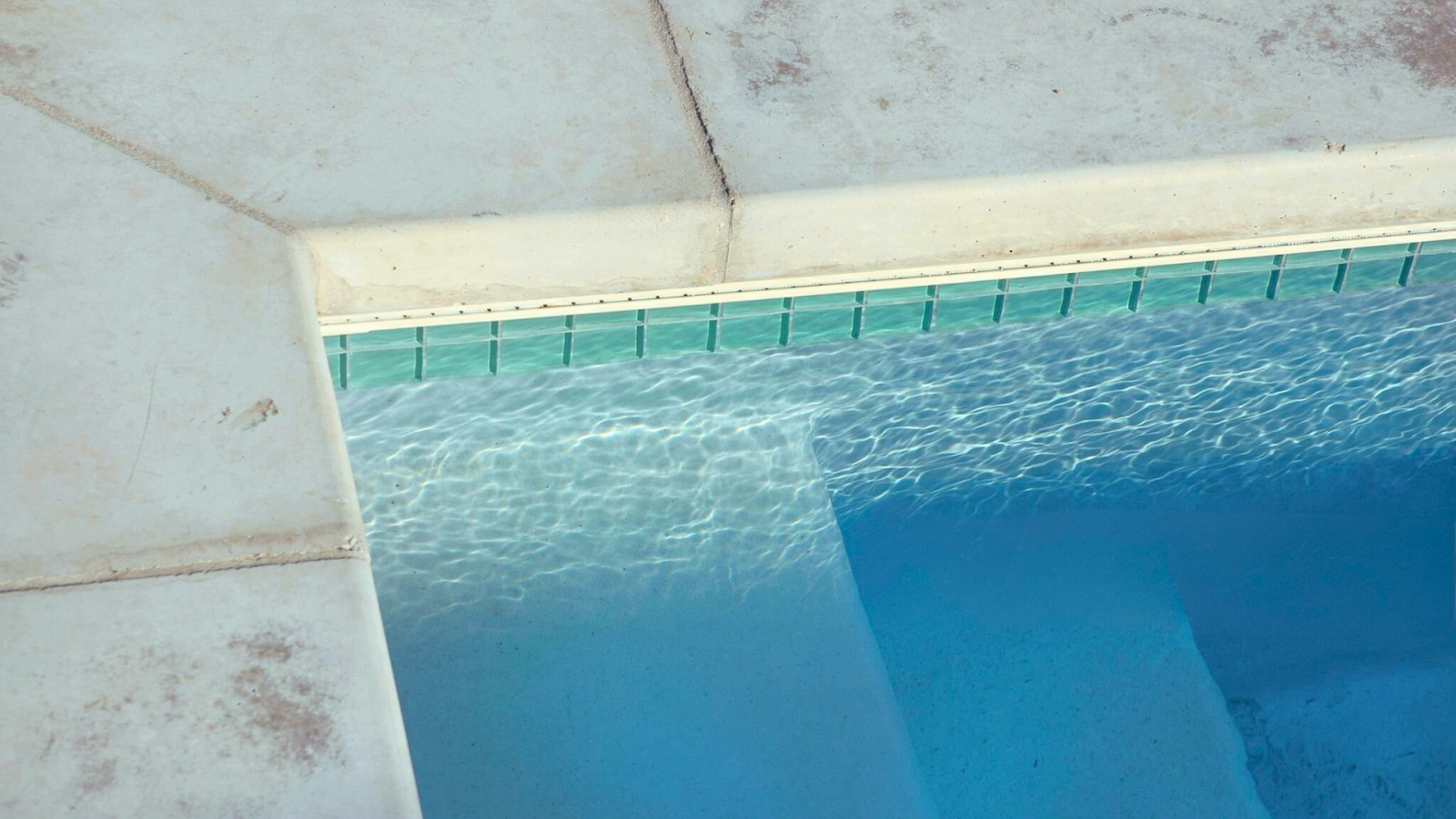8 Different Types Of Edges For Pool Windows - Which Is Best?


If you’re planning a luxury pool, whether it’s a boutique hotel, rooftop spa, ocean villa, or even your own backyard, adding an attractive pool window can make the pool stand out and look more classy.
And one of the most important aspects of a pool window is how its edge is built. Having the right types of edges can have a huge impact on the overall outlook of the pool.
But hey, do not just choose the edge type by reading one of these blogs or by watching a video.
During my early years in the pool business, I’ve had my fair share of errors and backlash from customers whom I suggested certain types of edges because I saw how great they looked at another pool. Now, I clearly know which pool and pool window should have which type of edge.
> If you’re building near the ocean or on a rooftop, edge style matters even more
What if you end up with an amateur pool builder, just like my early years? To avoid any mishaps, it’s best that you keep some solid knowledge of pools, pool windows, and edges.
And today, I have put together a quick article to describe 8 types of pool edges and when each of them should be used.
This will help you stay prepared and judge if your pool builder gave the right suggestion.
So read on and get knowledgeable.
TL;DR: 8 Pool Window Edge Styles To Consider

When designing a luxury pool window, the edge style plays a big part in the overall outlook of the pool.
Consider from 8 Types of Pool Window Edge Styles:
- Framed Edge – Proven strength, ideal for large/deep pools.
- Frameless Polished Edge – Sleek, modern, premium look for boutique or rooftop pools.
- Beveled Edge – Angled cut adds luxury sparkle and easier cleaning.
- Bullnose Edge – Rounded for safety; great for family pools and public areas.
- Infinity/Overflow Edge – Dramatic horizon effect; perfect for scenic sites.
- Recessed/Flush Edge – Clean, minimalist finish; protects edges.
- Chamfered Edge – Subtle modern style, keeps edges soft yet sharp‑looking.
- Stepped/Curved Edge – Custom shapes for panoramic or wrap‑around views.
The edge type affects your budget, guest experience, maintenance, and even local code approvals.
To avoid costly redesigns or leaks later, it’s best to plan with professional pool window designers and installers before you start construction.
You may consider contacting Hammerhead Pools for assistance. (Contact here)
Now let’s get into detail.
8 Pool Window Edge Styles To Consider
Pool edges and pool window edges don't mean the same, but don’t confuse them to look the same.
For an ordinary pool, you can consider several types of edges, and it will look good. But if you include a pool window, then you have to be concerned about the overall outlook, whether in or out of the pool.
Now, the following are the 8 different types of edges for pools which you can choose from.
But make sure you do not force pool builders to create a certain type of edge. Let them propose to you with proper reasons before agreeing or rejecting.
1. Framed Edge

A framed edge is a classic pool window design that is commonly used due to overall cost-effectiveness and longevity. Here, the panel (glass or acrylic) sits inside a visible stainless steel or concrete frame.
You’ll see a clear outline around the window, which serves an important structural role to spread the water pressure evenly and keep seals tight for decades.
Though visually a bit less appealing, framed edges ensure better support and strength in keeping the pool window in place.
Best for:
- Deeper pools where water pressure is higher
- Public pools, gyms, or hotels that need certified structural support
- Projects where the frame itself can match architectural accents
> Tip: If you’re not sure, talk to your pool designer early, as they may ruin the outlook if not properly shaped and colored.
A framed edge can be powder‑coated to match tiles or brand colors, so it is not too much of a visual concern, though visibly distinct in close range.
2. Frameless Polished Edge

Framed edges can often be less attractive. So many consider using a polished edge, where a hidden support is set up underneath or at the base of the pool window, leaving no visible frames.
The effect is incredible. The water meets the glass with nothing in between, and the edges look sleek. In rooftop pools that are on the side, the pool may seem connected to the sky from the other end.
However, it does limit having a deep pool or a pool that takes too much pressure with a regular high no. of visitors.
Best for:
- Rooftop plunge pools and boutique spas
- Private villas wanting a seamless, “floating glass” effect
- Places where design minimalism is the goal
Tip: Frameless pools tend to be more expensive to build. But, it’s also not possible to carry it out with precision without high experience. A little misalignment below can reduce the lifespan of your pool window’s longevity by 3-5 years.
3. Beveled Edge

A beveled edge means the window edge is cut at an angle (commonly 30–45°), removing the sharpness of a square edge.
This subtle detail catches sunlight and creates a jewel‑like sparkle underwater or in daylight.
Overall, such a pool window edge helps to maintain safety while delivering elegance.
Best for:
- Indoor pool feature walls or spa viewing panels
- Pools with architectural lighting that highlights edges
- Homeowners or hoteliers wanting subtle luxury without changing the structure
P.S.: Beveled edges are a bit expensive, but the output is worth the cost. However, you need to make sure the polishing is smooth to experience the full glamour.
4. Bullnose Edge

Bullnose edges are window edges that are fully rounded, like traditional pool coping. It feels soft to the touch and visually blends the pool window into curved surroundings, making it friendlier and safer.
Best for:
- Family pools and hotel kids’ areas
- High‑traffic public pools
- Anywhere people might sit on, lean against, or grab the window edge
P.S.: Bullnose edges slightly reduce corner stress, helping acrylic panels last longer. They are great if your design has long horizontal pool windows.
5. Infinity Edge / Overflow Edge

In this type of edge, the pool water’s high line is the same as the height of the pool windows. In this case, the water flows right over the pool window edge and spills into a hidden trough.
This creates that famous “vanishing edge” illusion where the pool blends with the horizon.
Best for:
- Rooftop plunge pools overlooking city skylines
- Oceanfront villas wanting a seamless water‑to‑water view
- High‑end projects using the window itself as a design signature
P.S.: Infinity edges need precision leveling and marine‑grade sealants. They cost more, but give the guests an incredible edge to capture beautiful photos while in the pool.
6. Recessed / Flush Edge

Here, the pool window sits slightly behind the surrounding wall or tile, so the glass or acrylic face is flush or even a bit hidden. It protects the edge from direct knocks and creates a minimalist look where the panel seems to emerge naturally from the wall.
Best for:
- Modern concrete or tiled pools
- Designs aiming for an “unbroken wall of water” feel
- Areas where wind or high contact could damage edges
P.S.: Recessed edges can be combined with lighting in the reveal for subtle nighttime effects.
7. Chamfered Edge

A chamfer is like a small bevel or a shallow, angled cut (10–20°) on the edge of a pool window. It keeps the clean, geometric style of a square edge but removes the sharpness, feeling harsh in real use.
Best for:
- Contemporary pools with straight lines and sharp corners
- Projects that want detail without obvious decoration
- Situations where the budget won’t stretch to deeper bevels
8. Stepped or Curved Edge

These are fully custom. Stepped edges involve layered cuts where the panel sits into complex framing.
Curved edges follow the radius of the window and are used with curved acrylic panels to wrap around corners or create cylindrical viewing areas.
Best for:
- Panoramic underwater lounges
- Statement features in luxury hotels or ocean‑view villas
- Designs wanting Instagram‑ready, unique shapes
Tip: Curved or stepped edges require advanced engineering and specialist fabricators. Discuss early because costs and timelines are different from flat panels.
Quick Summary: 8 Pool Window Edge Types
- Framed Edge
• Visual Feel: Strong outline, classic luxury
• Ideal For: Deeper pools, public pools - Frameless Polished Edge
• Visual Feel: Invisible support, modern elegance
• Ideal For: Rooftop pools, boutique hotels - Beveled Edge
• Visual Feel: Angled cut that catches light
• Ideal For: Indoor pools, spa feature walls - Bullnose Edge
• Visual Feel: Rounded, soft touch for safety
• Ideal For: Family pools, kid-friendly areas - Infinity / Overflow Edge
• Visual Feel: Water flows seamlessly over the edge
• Ideal For: Scenic villas, rooftop plunge pools - Recessed / Flush Edge
• Visual Feel: Set inside the wall, sleek and minimalist
• Ideal For: Modern homes, tiled architectural pools - Chamfered Edge
• Visual Feel: Shallow angled cut with geometric appeal
• Ideal For: Contemporary, angular pool designs - Stepped / Curved Edge
• Visual Feel: Custom-shaped curves and layers
• Ideal For: Wrap-around acrylic installations, statement windows
Final Thoughts: How To Choose The Right Types Of Edges
Every edge type isn’t just an aesthetic choice — it changes cleaning, safety, structural load, and guest experience.
- Frameless and infinity edges create stunning visuals, perfect for marketing photos
- Framed and bullnose edges are practical, proven, and easier to certify
- Recessed, beveled, and chamfered edges add subtle luxury without major redesign
Before you decide: Always check local building codes, talk to an experienced pool window installer, and think about who will use the pool (families, hotel guests, private owners).
Planning Your Own Project?
Whether it’s a boutique rooftop spa, a curved acrylic window around a lounge, or a classic framed panel in your backyard pool — edge type matters more than you might think.
If you want to see real examples, get practical cost ranges, or talk through what suits your design:
Contact our team here → Let’s talk
We’d be glad to help you plan smarter, not just spend more.
FAQs About Pool Window Edges
Q: Are frameless windows harder to clean?
Not if installed correctly — but they need careful sealing.
Q: Can I have a curved edge with glass?
No — curved panels need acrylic.
Q: Is an infinity edge only for big pools?
No — even small plunge pools can use it, but it needs precise engineering.
Q: Why do bullnose edges cost more?
Slightly more fabrication time, but safer and more comfortable.
Choosing the right edge style can elevate your entire pool design. Whether it's framed for strength, beveled for sparkle, or infinity for a dramatic view—each type offers unique benefits. By understanding the options and consulting with professionals early, you’ll ensure your pool window blends durability, luxury, and visual appeal.











